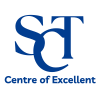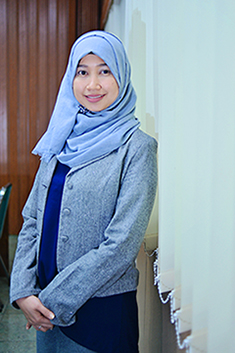Synthesis and Antiplatelet Activity of 4-Hidroxy-3-Methoxycinnamic Acid
Downloads
Background: Cinnamic acid and its derivatives have been widely studied for their efficacy because of the pharmacological effect on good health and well being. Microwave irradiation is more time effective to synthesize than conventional heating method because it conducts heat faster and shortens the reaction time. Objective: This study aimed to synthesize 4-hydroxy-3-methoxycinnamic acid using microwave irradiation and its antiplatelet activity by blood clotting time method. Methods: Synthesis of 4-hydroxy-3-methoxycinamic acid with malonic acid and 4-hydroxy-3-methoxybenzalehyde as a starting material using ammonium acetate catalyst with microwave irradiation (960 Watt, 4 minutes). The synthesis results were tested for purity by thin-layer chromatography, a melting point determination and structure identification (UV-Vis, infrared, and proton NMR spectrometry). The antiplatelet activity test consisted of a negative control group CMC-Na, a positive control acetosal, cinnamic acid, and 4-hydroxy-3-methoxycinnamic acid, each group consisted of 3 different doses, namely 0.0037 mmol/Kg (I), 0.0069 mmol/Kg (II) and 0.0139 mmol/Kg (III). Results: Synthesis of 4-hydroxy-3-methoxycinamic acid had a yield percentage of 30.55%. The test results showed that the 4-hydroxy-3-methoxycinnamic acid compound has antiplatelet activity with an ED30 value of 1.3080 mg/Kg BW and antiplatelet activity comparable to acetosal. Conclusion: 4-hydroxy-3-methoxycinamic acid can be synthesized by microwave irradiation and had antiplatelet activity 1.7 fold greater than cinnamic acid.
Acosta, R. D., Abraham, N. S., Chandrasekhara, V., Chathadi, K. V., Early, D. S., Eloubeidi, M. A. and Hwang, J. H. (2016). The management of antithrombotic agents for patients undergoing GI endoscopy. Gastrointestinal endoscopy ; 83; 3-16.
Ekowati, J., Diyah, N. W. and Syahrani, A. (2019). Synthesis and Antiplatelet Activites of Some Derivatives of p-Coumaric Acid. Chemistry & Chemical Technology; 13; 296-302.
Ekowati, J., Rahman, S. D., Isadiartuti, D., Widyowati, R. and Budiati, T. (2016). Synthesis of Ferulic Acid and Its Non Covalent Inclusion with Hydroxypropyl-β-Cyclodextrin. International Journal of Pharmaceutical and Clinical Research; 8; 198-205.
Hoffman, R., Benz Jr, E. J., Silberstein, L. E., Heslop, H., Anastasi, J., Weitz, J., Anastasi, J., Salama, M. E. and Abutalib, S. A. (2018). Hemostasis and thrombosis. Hematology: basic principles and practice; 7;1829-2200. Philadelphia: Elsevier Health Sciences.
Katzung, B. G. (2018). Drug used to treat diseases of the blood, inflammation, & gout. Basic and Clinical Pharmacology; 14; 591-642. McGraw Hill Professional, New York.
McMurry, J. (2016). Organic Chemistry 9th. California : Cengage Learning.
Pavia, D.L., Lampman, G.M., Kriz, G.S. and Vyvyan, J.R. (2015). Introduction to Spectroscopy 5th. California : Cengage Learning.
Sharma, Prateek. (2011) Cinnamic acid derivatives: A new chapter of various pharmacological activities. J. Chem. Pharm. Res: 3;403-423.
Smith, Janice Gorzynski. (2011). Organic Chemistry 3th. McGraw Hill.
Yang, X. Z., Diao, X. J., Yang, W. H., Li, F., He, G. W., Gong, G. Q. and Xu, Y. G. (2013). Design, synthesis and antithrombotic evaluation of novel dabigatran prodrugs containing methyl ferulate. Bioorganic & medicinal chemistry letters; 23;2089-2092.
Copyright (c) 2022 JURNAL FARMASI DAN ILMU KEFARMASIAN INDONESIA

This work is licensed under a Creative Commons Attribution-NonCommercial-ShareAlike 4.0 International License.
1. The copyright of this journal belongs to the Editorial Board and Journal Manager with the author's knowledge, while the moral right of the publication belong to the author.
2. The formal legal aspect of journal publication accessibility refers to the Creative Commons Attribution-Non-Commercial-Share Alike (CC BY-NC-SA), which implies that the publication can be used for non-commercial purposes in its original form.
3. Every publication (print/electronic) is open access for educational, research, and library purposes. In addition to the objectives mentioned above, the editorial board is not responsible for copyright infringement


.jpg)















